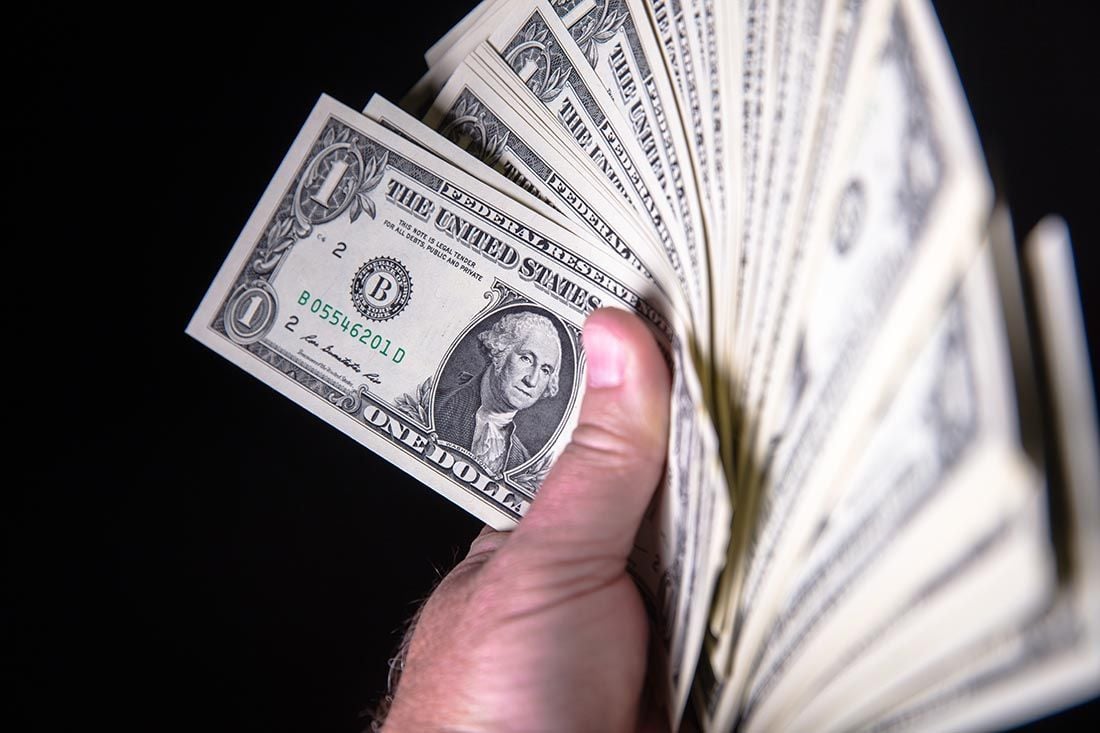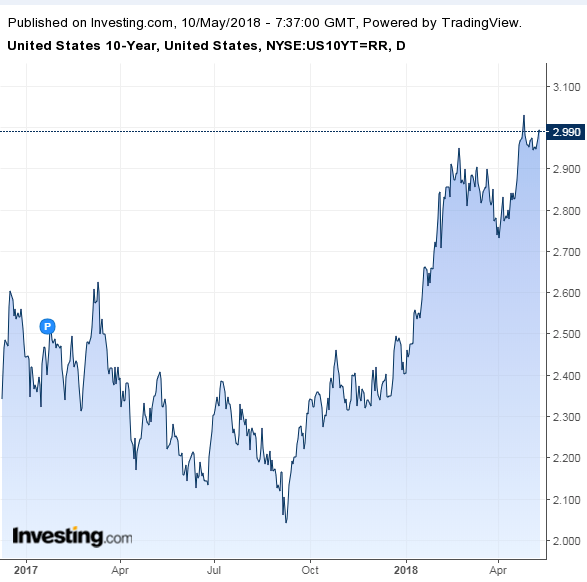Dollar Extends Slide as US Inflation Trend Falters in April and Traders Chase Risk Assets
- Written by: James Skinner
-USD slides broadly as markets react to April inflation disappointment.
-US CPI rises to 2.5% but core-CPI misses the spot with a 2.1% hold.
-Outlook dims as CPI trend weakens and Fed tolerates target "overshoot".

© RCP, Adobe Stock
The US Dollar extended losses broadly during the noon session Thursday as traders chased so called risk assets higher while also marking down the greenback following a weaker than expected set of inflation figures for April.
Headline US inflation rose by just 0.2% during the April month which, although better than the -0.1% contraction seen in March, was beneath market expectations for a 0.3% rise. This pushed the annual rate of consumer price inflation up to 2.5%.
Core-inflation, which removes volatile commodity items from the goods basket and so is seen as more representative of domestically generated inflation pressures, rose by just 0.1% after economists had forecast a 0.2% gain. This saw the annual rate of core inflation hold steady at 2.1% when markets had been hoping to see it tick higher to 2.2%.
Much of the increase in the headline number was the result of a rise in gasoline prices while the weakness in core-inflation was driven by a sharp fall in the prices of both new and used cars.
"As long as growth indicators hold up in the weeks ahead, the Fed is still likely to pull the trigger on another rate hike in June. But this does further tilt the odds in favour of two more rate hikes this year rather than the three some Fed officials have been suggesting. The slightly below consensus readings should be bullish for fixed income and bearish for the dollar," says Royce Mendes, an economist at CIBC Capital Markets.
The unmistakable message from Thursday's numbers is that, while consumer price pressures are still on the up in the US, inflation is not rising at the pace many economists and analysts had thought it was.
Set against last week's statements from the Federal Reserve, which suggested the central bank is willing to tolerate above-target inflation for a period of time rather than raise interest rates further or faster than markets had expected, this complicates if-not dims the outlook for US monetary policy.
The US Dollar index was quoted 0.51% lower at 92.66 following the release, after extending an earlier 0.18% loss. The Pound-to-Dollar rate was 0.12% lower at 1.3526 while the Euro-to-Dollar rate was 0.57% higher at 1.1916.
Markets care about inflation because it is consumer price pressures that central banks are attempting to manipulate when they tinker with interest rates, which are themselves the raison d'être for most moves in exchange rates.
Changes in interest rates, or hints of them being in the cards, are only made in response to changes in domestic inflation but impact currencies because of the push and pull influence they have on international capital flows and their allure for short-term speculators.
"From a technical point of view, the USD looks stretched," says Mark McCormick, North American head of FX strategy at TD Securities. "Against this backdrop however, the bar may be high to support the USD further from here especially after the introduction of "symmetric" in the Fed's recent statement suggests that there is no urgency to react to stronger inflation."
Thursday's price action comes as the US Dollar eased broadly in a "buy the rumour and sell the fact" response to President Donald Trump's decision to withdraw the US from the so called Iran nuclear deal. This provided broad support to so called risk currencies such as the Aussie and Canadian Dollars while penalising safe-havens like the US Dollar and Japanese Yen.
It also follows an extended run of gains for the greenback in the last three weeks, brought about by shifting interest rate dynamics in global bond markets, which have seen US 10 year yields reach multi-year highs in recent weeks.
Much of the rise in yields has been the result of an increased supply of American bonds on the market, rising inflation and earlier speculation the Fed might raise rates at a faster pace this year.
What matters now for markets is whether US yields continue to rise and if the US Dollar continues to follow them.

Above: 10 Year US Government Bond Yield.
Advertisement
Get up to 5% more foreign exchange by using a specialist provider to get closer to the real market rate and avoid the gaping spreads charged by your bank when providing currency. Learn more here.




